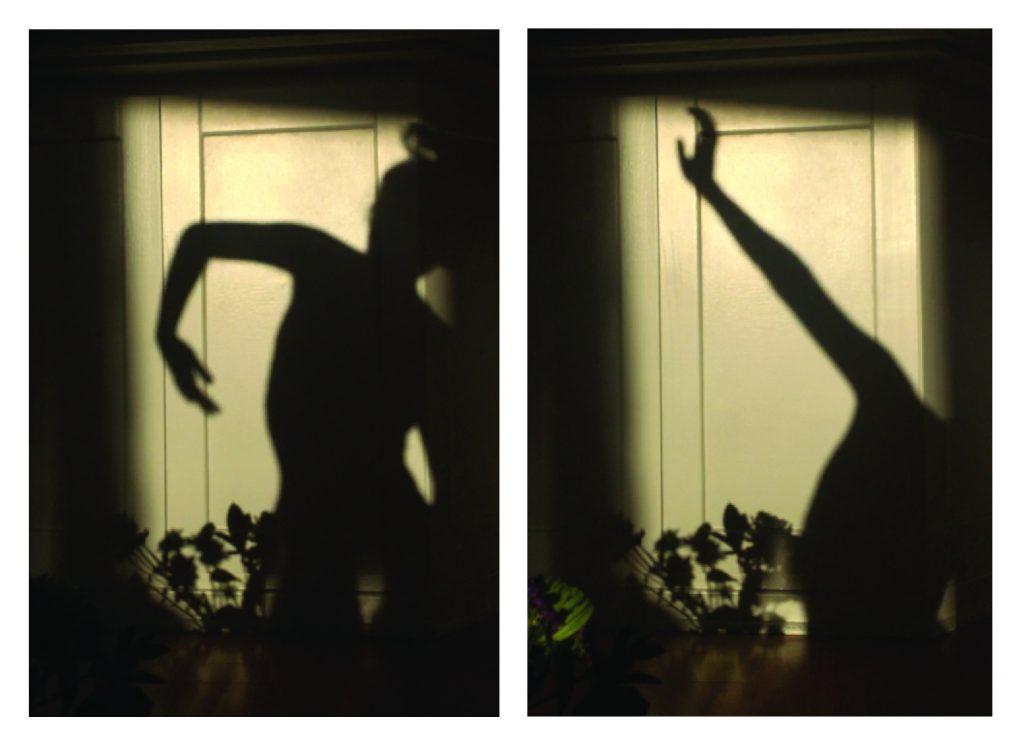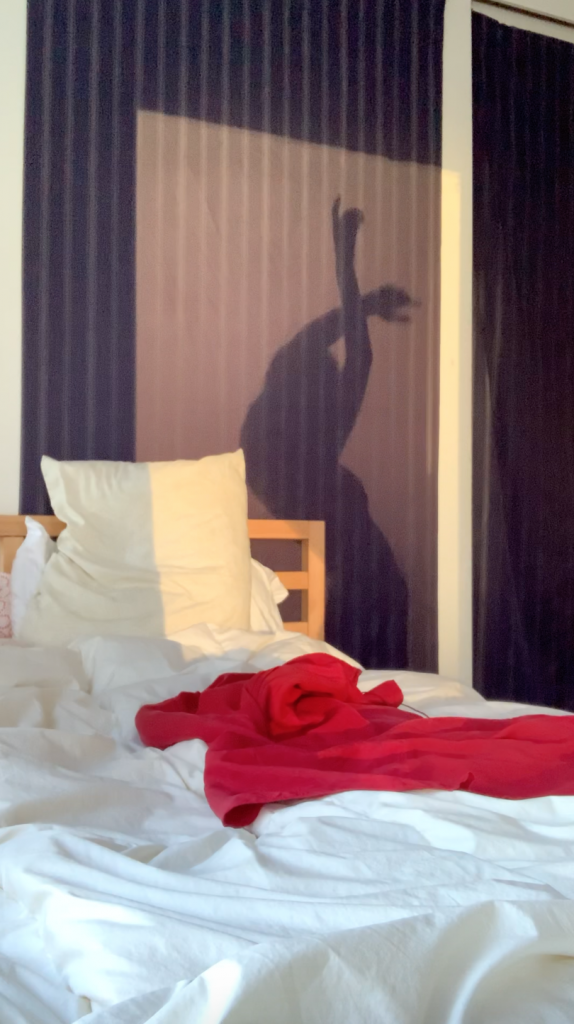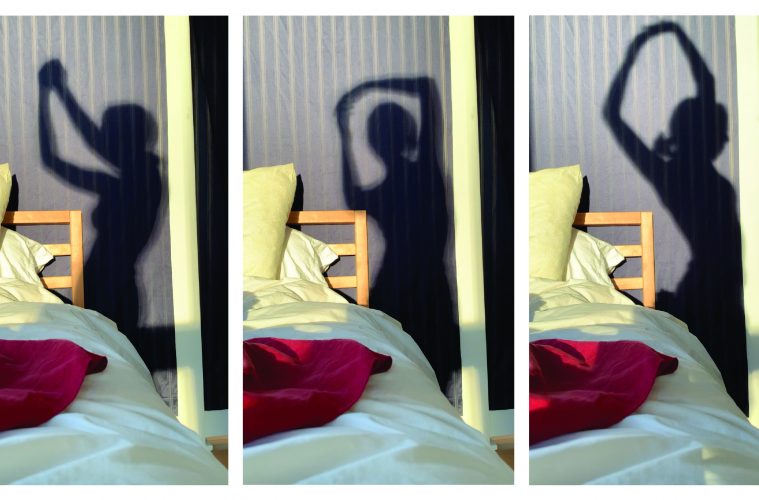Words by: Aya El Sharkawy and Shams Habib
Images by: Aya El Sharkawy and Shams Habib
This article is part of the “Ya Leil Ya Eyein” issue
Below is a conversation on dance, one that spanned continents and months.
For most of the government-mandated quarantines, Aya was in Egypt and Shams was in Toronto. Despite this distance, they were brought together in their shared yearning to move together in the face of instability and solitude, to leave their individual bodies for a larger pulsating body, to become organs in this assemblage of swaying. They found common ground in their understanding of intimacy in digital space and the power of dance and movement across spaces.
*
Aya: It’s nice to be in the same space.
Shams: It is! We weren’t in similar spaces for most of isolation, you were in Egypt for most of the pandemic and I was in Toronto.
Aya Yeah, most of last year was just virtual communication
Shams and Aya experienced lockdown differently. The regulations that Shams faced in Canada were much stricter. Everything closed down, including pools. After months of practicing synchronized swimming with her teammates and traveling to compete, she was landlocked.
Shams: On March 1st, right before the pandemic hit, we hosted a water show at our home pool and all of our friends and family came. We wanted to celebrate the work of 6 months and the incredible season we had just had. I remember that for months I’d watch the footage from the water show because it felt so surreal and heartwarming: a collective moment of people cheering, an abundance of sounds and energies — it was so different from the global crisis happening. The intimacies of the water show, of performing, moving through water, joyful cheering, warm gratitude, stayed with me for a long time and it kind of marked the end of a variety of experiences I have yet to have.
Aya: Do you feel like dancing for you shifted after that point because of the lack of audience and that you weren’t performing with your teammates?
Shams: That’s definitely part of it. My relationship to perception and voyeurism in relation to dance changed a lot during the pandemic. With synchronized swimming, there’s always someone other than you practicing whether it’s swimmers, divers, your coach, an old lady. And in the competition, you’re performing for the judges so there’s always an audience. I do tend to forget about that unless I’m at a competition, when I feed off performing and the audience/my team’s energy – it motivates me. I would occasionally miss performing but the bigger adaptation was being out of water. As hard as it was, I enjoyed exploring movement on land, without anyone watching, especially when it felt so new.

Shadow dancing by Aya El Sharkawy and Shams Habib
Meanwhile, Aya was suffering from a shift in her home life in Egypt, which felt reminiscent of the times when she could not escape the confines of a place she had outgrown.
Aya: Early in the pandemic (when I had to be home with my family all the time) I was suffering from very intense “cabin fever.” Exploring that was difficult because the last time that I’d been trapped like that was under very different circumstances and I had a lot less freedom. So it just felt like a huge regression in terms of my freedom and my development as a person. One of the ways that I was coping was by going to the beach. I went to Ras Sudr in March with two friends and we stayed there for a week. I woke up early one day and went out to the beach alone. I remember I was listening to Whitney Houston’s “I Want to Dance with Somebody,” which was so perfect for that moment. I was splashing around and dancing alone in the sea for almost half an hour before my friends started coming out to the beach. I just wanted to feel the water under my feet, on my body, and dancing was a way of bringing those things together. If I could describe feelings as opposites, I’d say that that feeling is the opposite of how I felt when I was experiencing that cabin fever at home, which was very dissociative and disembodied.
Shams: Whitney made you do it.
Aya: Yes, I love her! There were a few moments in the past year that stand out as dancing moments, like my New Year’s in Sinai, being surrounded by the sand, the beach, and the moonlight was so beautiful. I remember, I laid flat on my back and I could feel the speakers moving the sand under me. Just being able to feel the music in my body that way was the best way to start this year.
Shams: That sounds so surreal.
Aya: Yes, being in your head when you’re experiencing all these emotions is surreal, but to be in your body is a different thing, and it’s so grounding.
Shams was also learning to “find her feet” when it came to dancing on land. Without her teammate and the water, her dancing transformed in shape and medium, but also in its effect.
Aya: What did you do to nurture your desire to move?
Shams: I longed for various forms of dance: dancing at parties with people, which is intimate, loud, electric, and happens in a specific setting; synchronized swimming which is rigorous and full of discipline, and I’ve been doing it for the past 15 years. And then there’s “land dancing” and shadow dancing. I’ve taken some dance classes pre-pandemic, but nothing too serious. Shadow dancing was something I would do in my room – I would play music, stand against some light, and watch myself move. And with being out of the water, I think it was a sort of longing for synchronized swimming.
Aya: How does shadow dancing differ from what you’re used to?
Shams: It’s more vulnerable. In the water, you only get to see half of my body most of the time because the other half is supporting it underwater. So even the mere idea of standing in front of someone on land to dance is more daunting. But I enjoyed how movements were stripped down and I could get lost in small details and subtleties: rotations, moving my fingers slowly, playing with my silhouette. I didn’t have to worry about carrying my weight or making “practical” choreographic choices. It was quite liberating and lovely to be both the performance and the spectator.

Through this reminiscing and reflecting, we are reminded of the weight and lightness of dance, the intricacies of movement and space, politics, and policies of the body.
Aya and Shams reunited briefly in Summer 2020 when Shams returned to Egypt to visit her parents.
Aya: Do you remember when you were here in the summer and we were hanging out on your roof with two of our friends. We played this stupid 2000s playlist and everybody was on their feet. Normally in a gathering that small people would just sit and sing, but everybody was dancing. I think it’s because there was that energy of missing going to a party and being able to move.
Shams: We took what we could get
That night of dancing on the rooftop was a reprieve, but Shams went back to Toronto after the summer, and as fall rolled in lockdown became our reality once again.
When she contracted COVID-19 in late October 2020, Aya downloaded TikTok. Sick and home alone, she felt the experience of watching people dance was restorative. The feeling of aloneness, an ongoing undercurrent during the pandemic, necessitated a reimagining of space and solitude. Virtual spaces were flourishing with people who just wanted to share, to be perceived, and to dance together.
Shams: How did dancing feel when you were sick?
Aya: I learned my first TikTok dance when I was waiting for my PCR results to come back and I had a strong fever. I have to say, it’s a bit of a crazy story. I had to break into my own house because I had locked myself out and my parents were out of town. I climbed up a huge ladder and jumped onto my balcony, so I was already exhausted from that physical exertion. Sick, tired, and alone, I decided to go on TikTok.
Shams: As one does.
Aya: Don’t judge me, Shams, I was delirious. Anyway while scrolling on Tiktok that day I saw a mutual friend of ours had just done a dance to a song that you had shown me that summer. I looked up the moves and practiced for two hours before filming it. Afterward, I was so exhausted I slept for 15 hours straight. I don’t understand why I did it as soon as I got home instead of resting, but it’s almost like I needed to dance with her. I wanted to be part of that movement, with that friend. The urgency of it really speaks to how much power there is in moving my body, ailed or healthy, and feeling less alone.
Shams: How did it feel to navigate TikTok when women’s bodies were being policed in digital spaces?
Aya: It really is a complicated feeling. On the one hand, I feel a dissonance, like a kind of distance from it all. It is almost as if I am not in the same place because I am not under the same threat that those women are under.
Shams: There is a distance between you and them in class and power.
Aya: Exactly, and the policing of their bodies is legitimized because of that. Knowing the consequences that some have faced as a result of their popularity on the app only makes my use of it feel more absurd. I found a community through TikTok, while others lost their freedom.
*
Our transatlantic conversations took place through texts and calls over the year when we would reach for each other over WhatsApp or Instagram, gushing about this fantasy we had. Sweating bodies, strobing lights, pounding music. As we imagined together, we chased after dance in new ways to sate this hunger. We shared a rooftop dance in the summer, had profound conversations about what dancing with people means and how it feels, full of yearning and sensation.
Through this reminiscing and reflecting, we are reminded of the weight and lightness of dance, the intricacies of movement and space, politics, and policies of the body. We are reminded of the experience of dancing together in digital spaces, across continents and through time differences – still swaying together in hardship and leaning into intimacy.
BIO
Aya is a writer, anthropologist, poet, activist, and researcher based in Cairo. They graduated in 2019 from the American University in Cairo where they studied Anthropology and Film. Most recently, they have been involved in the compilation and presentation of the Speculative Data Futures project which is a series of science-fiction Arab-futurism, gender-centric short stories by women from Egypt, Syria, and Palestine. A recurrent interest in their research has been exploring the intersections of visual and cultural discourse. As an Arab woman, her education and identity both nuance and constantly challenge the categories to which she ascribes and is subjugated.
Shams Habib is an Egyptian artist and writer interested in exploring notions of performance, remembrance, and erasure. Shams enjoys sitting between the lines, self-portraiture, and sweet taymour mangoes.

